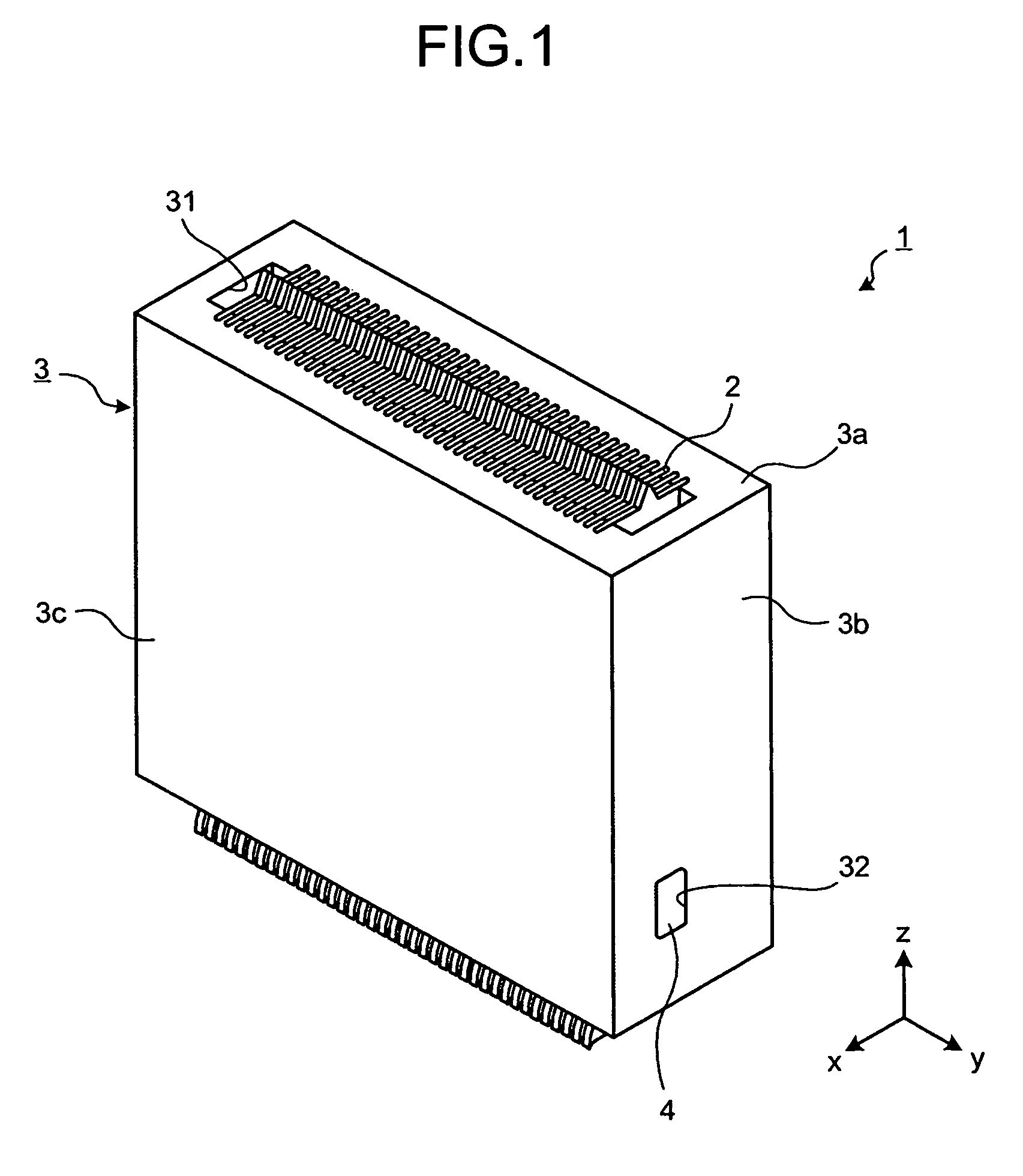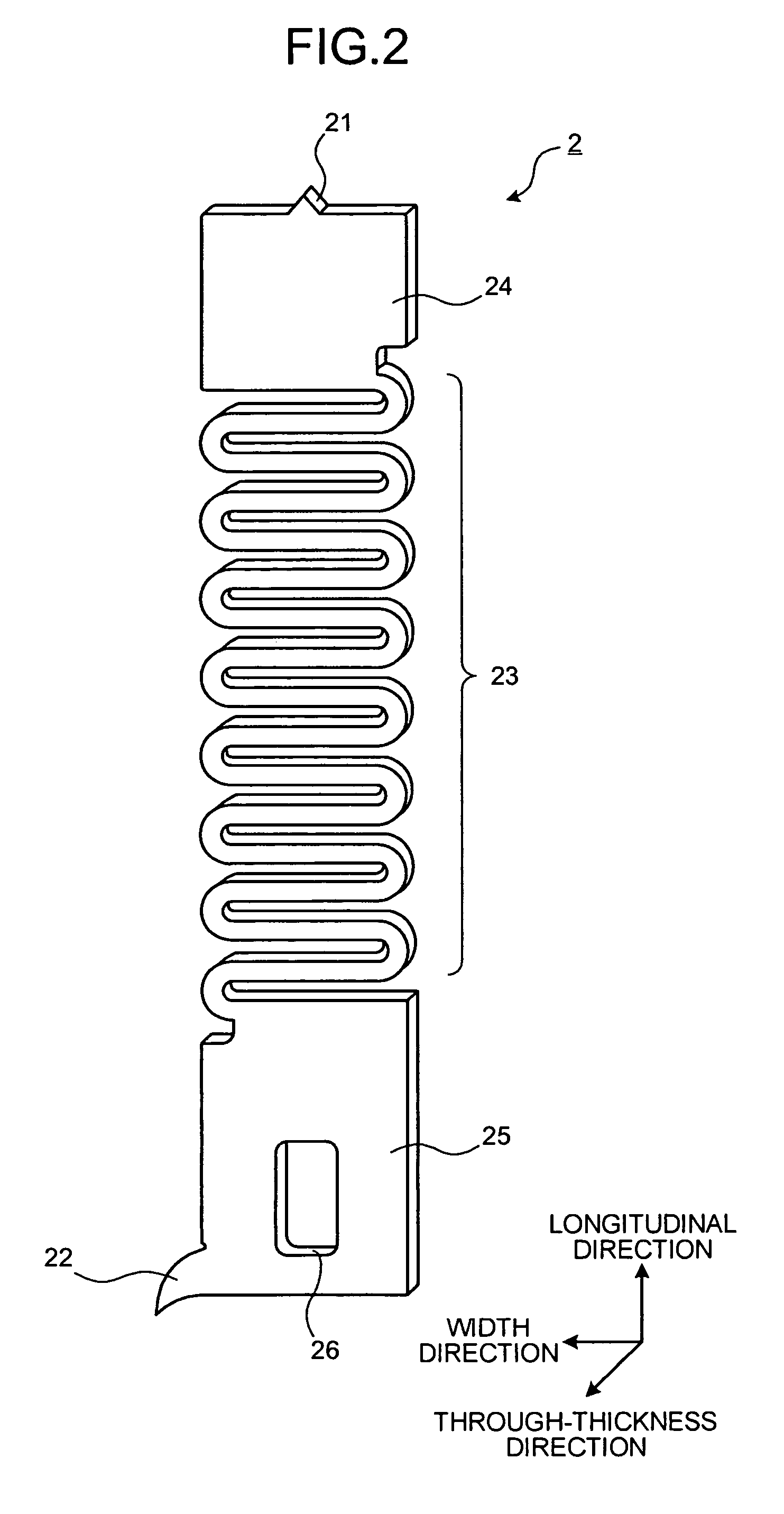Conductive contact unit and conductive contact
- Summary
- Abstract
- Description
- Claims
- Application Information
AI Technical Summary
Benefits of technology
Problems solved by technology
Method used
Image
Examples
first embodiment
[0053]FIG. 1 is a perspective view of a structure of a conductive contact unit according to a first embodiment of the present invention. A conductive contact unit 1, shown in FIG. 1, is used for testing the conductive state or operating characteristics of testing a circuitry, such as a liquid crystal panel that is a test object. The conductive contact unit 1 includes a plurality of conductive contacts 2, a conductive contact holder 3 that contains the conductive contacts 2, and a bar-shaped member 4 that is fastened to the conductive contact holder 3 and supports the conductive contacts 2.
[0054]The conductive contact 2 will be now explained in detail. FIG. 2 is a diagram of a structure of the conductive contact 2 according to the first embodiment. In the following description, the vertical direction in FIG. 2 will be referred to as a “longitudinal direction of the conductive contact 2”, the horizontal direction in FIG. 2 will be referred to as a “width direction of the conductive co...
second embodiment
[0082]FIG. 7 is a diagram of a structure of a conductive contact according to a second embodiment of the present invention. In the following description, the vertical direction in FIG. 7 will be referred to as a “longitudinal direction of a conductive contact 5”, the horizontal direction in FIG. 7 will be referred to as a “width direction of the conductive contact 5”, and the direction intersecting with the longitudinal direction and the width direction will be referred to as a “through-thickness (thickness) direction of the conductive contact 5”, respectively.
[0083]The conductive contact 5 shown in FIG. 7 is provided to establish an electrical connection between different circuitries. The conductive contact 5 includes: a first contacting element 51 that is brought into physical contact with a predetermined circuitry (specifically, a circuitry including a test circuit); a second contacting element 52 that is brought into physical contact with a circuitry other than that brought into...
PUM
 Login to View More
Login to View More Abstract
Description
Claims
Application Information
 Login to View More
Login to View More - R&D
- Intellectual Property
- Life Sciences
- Materials
- Tech Scout
- Unparalleled Data Quality
- Higher Quality Content
- 60% Fewer Hallucinations
Browse by: Latest US Patents, China's latest patents, Technical Efficacy Thesaurus, Application Domain, Technology Topic, Popular Technical Reports.
© 2025 PatSnap. All rights reserved.Legal|Privacy policy|Modern Slavery Act Transparency Statement|Sitemap|About US| Contact US: help@patsnap.com



